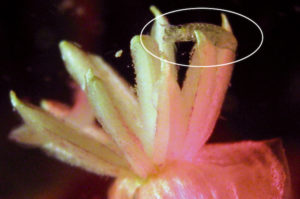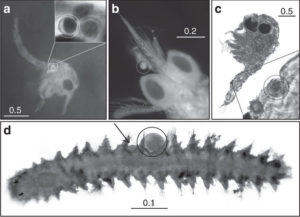Pollination. I think most people understand why this is important (or maybe I should say, I hope). To put it simply, the process of pollination facilitates reproduction in plants by transferring pollen from one plant to another. In the terrestrial world, this can be mediated by physical forcing (e.g., wind) or by animals (e.g., insects) – and its why people are freaking out about the loss of bees due to pesticides (because they are a primary pollinator), but I digress. Until relatively recently, pollination by animals was not thought to occur in the ocean. Unlike on land, where most flowering plants rely on creatures to carry pollen, plant reproduction in an aquatic world was surmised to rely exclusively on currents and tides. However, a team of researchers led by marine biologist Brigitta van Tussenbroek revoked the long standing paradigm that pollen in the sea is transported only by water, discovering and documenting the process of zoobenthophilous pollination (a term they coined).

flower of the seagrass Thalassia testudinum at night. (Photo credit: Tussenbroek et al. 2012)
These researchers from the National Autonomous University of Mexico observed that tiny crustaceans visiting seagrass beds were covered in grains of pollens. It seemed to van Tussenbroek and her team as if these organisms were most certainly pollinators, but the researchers did not have any definitive proof. As good scientists do, they put their hypothesis to the test. They developed a series of mesocosm based experiments in aquaria, and determined that in the complete absence of current, seagrass flowered only when visited by by crustaceans, i.e., underwater animal pollination!

There are a number of practical implications for their findings. Seagrass meadows are foundational to many coastal habitats and are amongst the world’s most productive ecosystems. Seagrass provides a number of ecosystem services such as improved water clarity, stabilization of the coastline, sequestration of carbon, and a facilitator of marine diversity. These findings by van Tussenbroek and her team demonstrate that despite how much we may know, there are still many more wonders and mysteries to elucidate about the natural world!
You can read more about this awesome study which was recently published in the journal Nature.